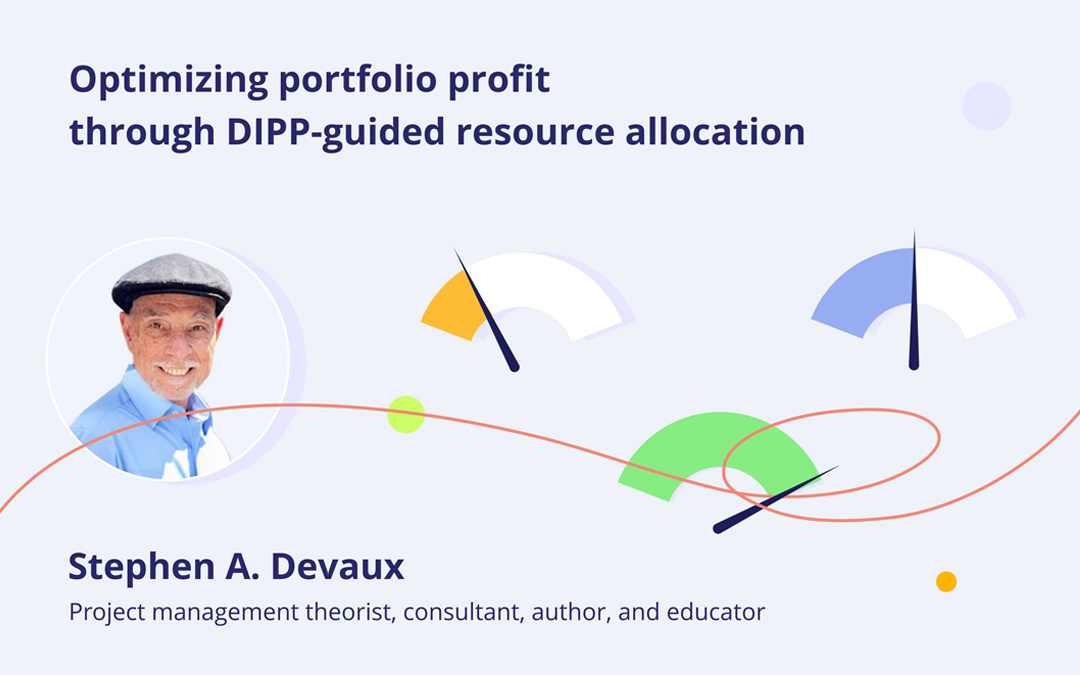Optimum utilization of resources’ potential is not only the key to the successful completion of projects but also an essential prerequisite for an organization’s business growth. But it can be rather challenging to ensure timely project delivery and high-quality project outcomes, not to overload your employees, and create opportunities for profitability growth, especially when you have multiple projects in the pipeline and a limited number of employees. In that context, resource optimization gains particular importance.
What is resource optimization?
We can define the concept of resource optimization in two ways.
First, it refers to the optimization of resource scheduling with regard to employees’ availability and time constraints. This involves leveraging resource optimization techniques – resource leveling and resource smoothing, both of which help match resource availability to the project schedule.
Read more: Resource Leveling: How to Optimize Resource Allocation and Utilization
The second meaning of resource optimization is broader – it’s about the intelligent utilization of a company’s resources – human, material, and financial. In this article, we’ll focus on resource optimization in that context. In a nutshell, you can optimize project resources by means of:
- Maximizing resources’ productivity;
- Balancing people’s workloads;
- Preventing additional expenses;
- Minimization and timely detection of bottlenecks.
Resource optimization has a number of benefits for an organization; those that put their effort into resource optimization have a chance to:
- Ensure fruitful work on projects;
- Increase the number and quality of delivered projects;
- Create opportunities for business growth;
- Increase profitability.
But very often, resource optimization is easier said than done, especially in project-based organizations that run multiple projects concurrently. Let’s review the factors that prevent such companies from efficient resource utilization.
What prevents project-based organizations from optimum resource utilization?
Managing projects in a multi-project environment, which is complex by its nature, is accompanied by numerous challenges – dependencies between projects, overlapping due dates, resource conflicts, etc. Under such conditions, efficient resource utilization becomes really demanding. Here are some more factors that hamper resource optimization.
Lack of necessary data
To manage projects and their resources effectively, you need to work with a variety of data: e.g., employees’ competences, availability, capacity, resource performance, work progress, budget utilization, etc. It’s also important to keep track of material resources’ consumption if they are required for project completion. When this data isn’t centralized (kept in different places), regularly updated, and easily accessible when needed, it will be rather difficult to optimize resource utilization.
Absence of resource planning
One of the main prerequisites for efficient staffing of multiple concurrent projects is analyzing the resource demand with available supply and taking timely measures to match them. In other words, before you add a new project to your environment, you need to be sure that there are enough available resources to get the work done. A lack of resource capacity planning can lead to delays or unreasonable hiring, both of which will result in additional expenses.
Poor competence management
With rapid technological development, the demand for employees’ skills is changing, too. According to the Future of Jobs Report, by 2025, 85 million jobs may be displaced by a shift in the division of labor between humans and machines, and 97 million new roles may emerge that are more adapted to the new division of labor between humans, machines, and algorithms. It means that the need for employees’ reskilling and/or upskilling increases exponentially.
Proper competence management makes it possible to tap into team members’ skills; otherwise, the window of opportunity will be narrowed for companies that strive to optimize the utilization of their employees’ potential.
Improper resource allocation
To ensure maximum efficient project work, you should make sure the tasks assigned to the team members fully match their competences. This is confirmed by the results of the research by Gallup: people who use their strengths at work are more efficient than those who don’t. So, when employees work on tasks that are too simple or too difficult for them on a regular basis, their productivity will be reduced. Also, when you don’t take into account the data on team members’ capacity when assigning employees to project tasks, it can lead to their overwork and reduce their efficiency as well.
Unresolved bottlenecks
As we’ve noted earlier, one of the challenges you come across when managing multiple projects is the dependencies between them. This fact requires careful attention to even the smallest roadblock occurring in the workflow – even a small issue in one project can grow like a rolling snowball and turn into a big problem for a whole project environment. For example, if there’s a team member who cannot cope with the assigned tasks for a certain reason, he or she becomes a bottleneck. And a project/resource manager has to identify the cause: is this team member overloaded? Or maybe he/she has been idle – then what’s the reason for their idleness? If such a bottleneck isn’t noticed on time and resolved, it will negatively affect the other employees’ work and other projects in the environment causing project delays and exceeding the budget.
Read more: Tracking Performance: Switching from Project to Resource Level
Poor risk management
Without a doubt, risk management is a necessary component of project management. But if you fail to identify all potential risk areas, analyze the probability of these risks as well as assess their possible negative consequences for the project environment, there are high chances not only for exceeding the approved costs and delays but even project failure. In this case, resource optimization becomes out of the question.
We’ve examined the most essential project and resource management problems that prevent companies from optimized utilization of their human and financial resources. Now, it’s time to find out how to change the situation, in particular, how a resource management solution can help you cope with the above-mentioned issues and optimize your project resources.
How resource management software helps optimize resources: Epicflow solution

Epicflow is an AI-powered multi-project resource management solution, which has been designed by the experts with 20+ years of experience in project and resource management. Let’s examine some of Epicflow’s capabilities to understand how resource management software can contribute to resource optimization.
Task prioritization
Being involved in several projects at the same time, the team members may find it difficult to select the highest priority task to focus on. But without that, their work won’t be fruitful. Epicflow can assist them: it automatically prioritizes tasks across the whole project environment and provides every team member with a prioritized list of assignments to work on. Such an approach can significantly increase employees’ productivity – they will put their effort into the tasks that matter most for a moment.
Competence management
Epiclow’s Competence Management feature provides quick access to the data on each team member’s skills, their levels, and capacity. How can this data optimize resources?
- It can help identify the need for team members’ reskilling and upskilling, depending on the project’s needs.
- With this information at hand, you can address the challenge of resource unavailability: e.g., if there aren’t any available employees to complete a task, you can find a person with the required skills and capacity from the other resource group.
In both cases, your team members’ potential will be more efficiently utilized.
Smart resource allocation
The above-mentioned Competence Management feature can also ensure that the right team member works on the right tasks, with a maximum contribution to the project. In addition, Epicflow has a resource allocation advisor that automatically analyzes the data on employees’ skills, capacity, and availability, and suggests an ideal team member to assign a task to. Therefore, Epicflow has all the necessary tools for efficient resource allocation and their optimized utilization.
Tracking performance on different levels
Tracking performance regularly makes it possible to identify bottlenecks and issues at the right time before they become threats to the project environment. Epicflow provides opportunities to track performance both at the resource and the project level. For example, its Historical Load Graph allows you to compare the delivered output in relation to team members’ capacity – this information will help you assess resource groups’ productivity as well as identify bottlenecks and their causes. Also, you can gain insight into the current state of the whole project environment and find projects that require your immediate management attention.
Material resources’ management
Efficient utilization of material resources is impossible without their proper management. Epicflow allows a project manager to keep track of material resources: assign them to project tasks and control their consumption. In this case, you won’t have to keep any other records on material resources elsewhere – the solution will cover everything you require for efficient project work.
Facilitating informed decision-making
Making the right management decisions is one of the main prerequisites for reducing negative risks and ensuring smooth workflow and successful project delivery. With Epicflow’s What-if Analysis feature, you can test various project changes, analyze their impact, and choose the most advantageous one. For example, you can find the best way to respond to a risk-bearing event or resolve a bottleneck, etc.
Besides, Epicflow’s Project Staggering feature can suggest the best moment for starting a project based on the team members’ capacity so that it can be delivered on time and within budget; this will protect your current project environment from bottlenecks and other related issues.
These are just some examples of Epicflow’s capabilities that contribute to the optimization of project resources. Schedule a consultation with our experts to learn about the full spectrum of Epicflow’s functionality and its opportunities to optimize resources and ensure business growth.







